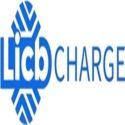Notifications

8 minutes, 20 seconds
-11 Views 0 Comments 0 Likes 0 Reviews

As electric vehicles (EVs) continue to reshape modern transportation, understanding the different charging methods is essential for drivers, homeowners, businesses, and municipalities. Among them, AC EV charging—short for Alternating Current Electric Vehicle Charging—is the most widely used option.
Whether you're installing a home charger, evaluating commercial infrastructure, or simply learning how to get the most out of your EV, understanding when and why to use AC charging can save you money, improve battery life, and ensure optimal charging performance.
This guide breaks down what AC charging is, how it works, its pros and cons, and when it’s the ideal choice for EV owners and operators.
AC (Alternating Current) is the standard form of electricity delivered by the power grid to homes, businesses, and EV charging stations. It powers everything from lights and appliances to industrial equipment.
However, EV batteries can only store Direct Current (DC). When you charge an EV via AC, the car’s onboard charger converts the alternating current into direct current before it reaches the battery.
AC Charging Station: Supplies alternating current to the EV
Onboard Charger (inside the EV): Converts AC to DC
Battery Pack: Stores DC energy for driving
In short, AC charging sends power to the car, and the car handles the conversion.
Connection: Plug your EV into an AC charging station using a Type 1 or Type 2 connector.
Power Flow: The station delivers AC electricity to the vehicle.
Conversion: The EV’s onboard charger converts AC to DC.
Battery Charging: The DC power is stored in the vehicle's battery.
🔋 Important Note:
The charging speed is limited by the vehicle’s onboard charger, not the power capacity of the AC station. For example, if your EV supports only 7 kW, plugging it into a 22 kW charger won’t increase the charging rate.
| Feature | AC Charging | DC Fast Charging |
|---|---|---|
| Power Type | Alternating Current (AC) | Direct Current (DC) |
| Power Conversion | Inside the EV | Inside the charging station |
| Charging Speed | Up to 22 kW | 50 kW to 350+ kW |
| Charging Time | 3 to 16 hours (depending on power) | 15 to 60 minutes |
| Ideal Use | Home, work, public parking | Highways, fleet depots, long trips |
| Installation Cost | Lower | Higher (industrial setup needed) |
🟢 AC is ideal for regular, long-duration charging.
🔴 DC is ideal for quick top-ups and road trips.
AC chargers are simpler and more affordable than DC fast chargers, especially for residential and workplace use.
Found at homes, offices, hotels, shopping centers, and municipal parking lots, AC chargers are the most common EV charging type worldwide.
Slower, controlled charging generates less heat, helping to preserve battery longevity compared to frequent fast charging.
EVs can be fully charged during your sleep or a work shift—making AC ideal for people with predictable routines.
AC chargers can be easily connected to solar panels or home energy systems, reducing your carbon footprint and energy costs.
Home charging is the most convenient and cost-effective option. A Level 2 charger (typically 7.4 kW or 11 kW) installed in your garage or driveway can fully charge your vehicle overnight.
Workplace charging stations allow you to top off your EV during an 8-hour workday—especially helpful for long-distance commuters.
Many shopping malls, gyms, and restaurants offer AC charging stations, giving your EV a quick boost while you go about your day.
AC chargers in parking garages or dedicated spots provide overnight or long-stay charging for guests and residents.
For typical commutes (under 50 miles per day), AC charging more than meets daily range requirements without stressing the battery.
Charging time depends on:
The onboard charger capacity (EV-dependent)
The AC charger’s output power (typically 3.7 to 22 kW)
| Power Output | Charge Time (60 kWh battery) | Common Setting |
|---|---|---|
| 3.7 kW | ~16 hours | Level 1 (standard outlet) |
| 7.4 kW | ~8 hours | Home Level 2 charger |
| 11 kW | ~6 hours | Workplace/Public charging |
| 22 kW | ~3 hours | Fast AC public chargers |
🕒 Tip: Even 1–2 hours of charging while shopping or working can significantly boost your range.
Yes. The average EV driver travels under 50 miles per day, and AC charging easily supports this with a few hours of charging per day or overnight.
For long-distance trips or emergencies, DC fast charging is helpful—but for daily life, AC charging is more than sufficient.
Check your home or building’s electrical capacity and upgrade if necessary.
Level 1: Plug into a standard outlet (slow)
Level 2: Requires a 240V connection (faster, recommended)
Choose a charger with Wi-Fi or Bluetooth for:
Remote control and monitoring
Charging schedules (e.g., off-peak hours)
Cost tracking and usage reports
Ensure the charger matches your vehicle’s connector (usually Type 2 in Europe, Type 1 in older US/Asian models).
In many areas, local permits and a certified electrician are required. Always comply with building and safety codes.
AC EV charging is the most practical and accessible solution for daily charging—whether at home, work, or public destinations. It offers a perfect balance of cost, convenience, and battery health benefits.
While DC fast charging plays a key role in long-distance travel and commercial fleets, AC chargers handle 80–90% of real-world charging needs for individual EV drivers.
By understanding how AC charging works—and when to use it—you can enjoy a smoother, smarter, and more sustainable EV experience.Know more about Google SEO Directory
China EV Chargers EV Charger Manufacturer Smart EV Chargers Electric Car Chargers Electric Vehicle Chargers Electric Car Charging Stations

